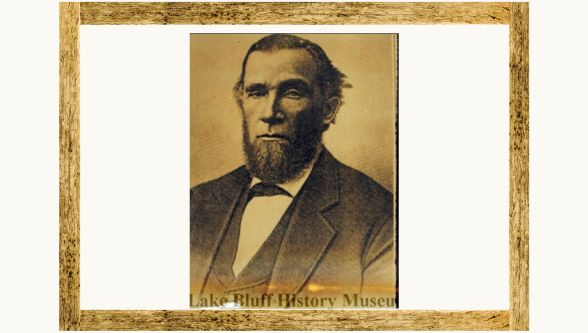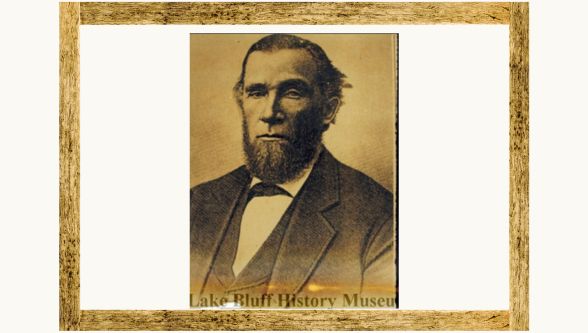Canceled flights at O’Hare. Delays on the Metra platform. Construction on the Stevenson. Amtrack strikes. GPS signal loss. Road rage on the Edens. Back-ups at school drop-off. Electric scooters everywhere …
If you think modern transportation is challenging, consider what Judge Henry Blodgett and his family went through to get to Illinois from Massachusetts in 1831 when he was a boy of 10.
His father, Israel Porter Blodgett, was a fifth generation East Coast blacksmith who became “smitten with the ‘Western Fever’” and decided to strike out for the frontier, according to Henry’s autobiography published some 60 years later. Israel ventured west about a year ahead of his family, traveling by way of the “National Road,” which ran through central Ohio, Indiana and Illinois to St. Louis.
After making it to Illinois and exploring the Fox River and Du Page River valleys, Israel settled on the east branch of the Du Page River (in present day Naperville) and built a log cabin there.
The plan was for his wife and children to join him upon the opening of the Erie Canal in New York, which connected the Hudson River at Albany to Lake Erie at Buffalo. So while Israel traveled by land, Henry and the rest of the family went west by water.
The family started out in early April 1831. (Was it cold and rainy as April often is? Henry doesn’t say). From Albany they took a canal boat to Buffalo, NY. The trip took about two weeks.
In Buffalo, the family boarded a steamship for Detroit via Lake Erie. This leg of the journey took about four days and included stops at harbors along the southern border of the lake.
In Detroit, their original plan was to book passage in early May on a schooner carrying supplies on Lake Michigan to Ft. Dearborn, but no such schooner was available. With other travelers, the Blodgett family secured teams of horses and wagons to get them to Chicago. Just organizing the teams took about five days.
An arduous land journey followed. Henry describes the travel as being long and tedious, on crude, irregularly shaped roads. They encountered rivers, too, and some were easier to cross than others. The smaller ones had bridges or were passable by “corduroy roads” made of logs placed perpendicular to the river. To cross larger rivers, they took ferry boats, and at some rivers the ferries could only take one wagon or one pair of horses at a time.
It took three weeks to get from Detroit to Chicago. The Blodgetts stayed with another settler family until Israel arrived by horse-drawn wagon and brought them to the log cabin on the banks of the Du Page River.
Added up, the trip from east to west took more than six weeks, with none of our modern-day accoutrements like satellite maps and Starbucks coffee, not even bug spray or window screens. Think about that the next time you’re aggravated by the person in front of you at a stoplight who’s so fixated on their phone they don’t realize the light has turned from red to green!

